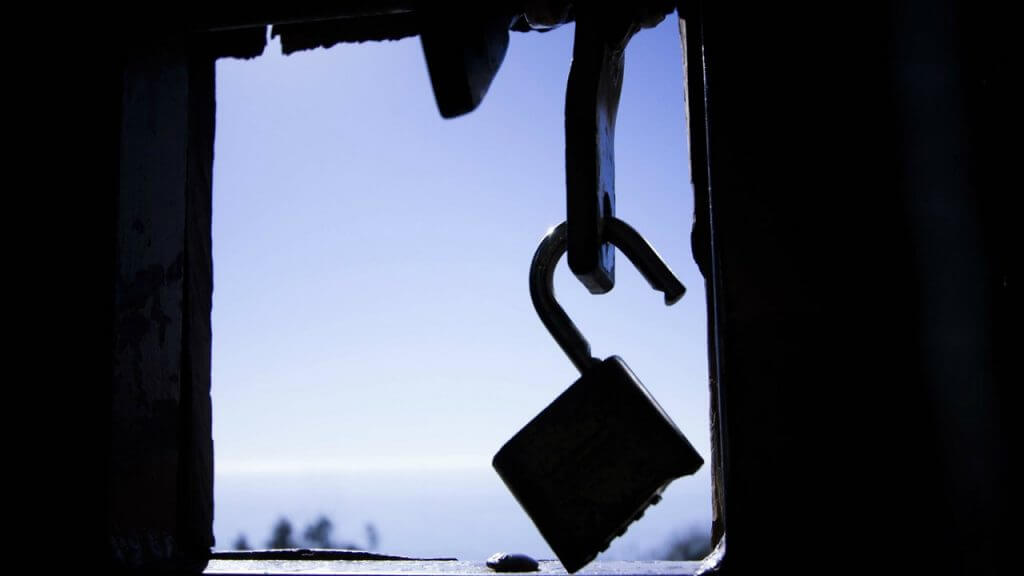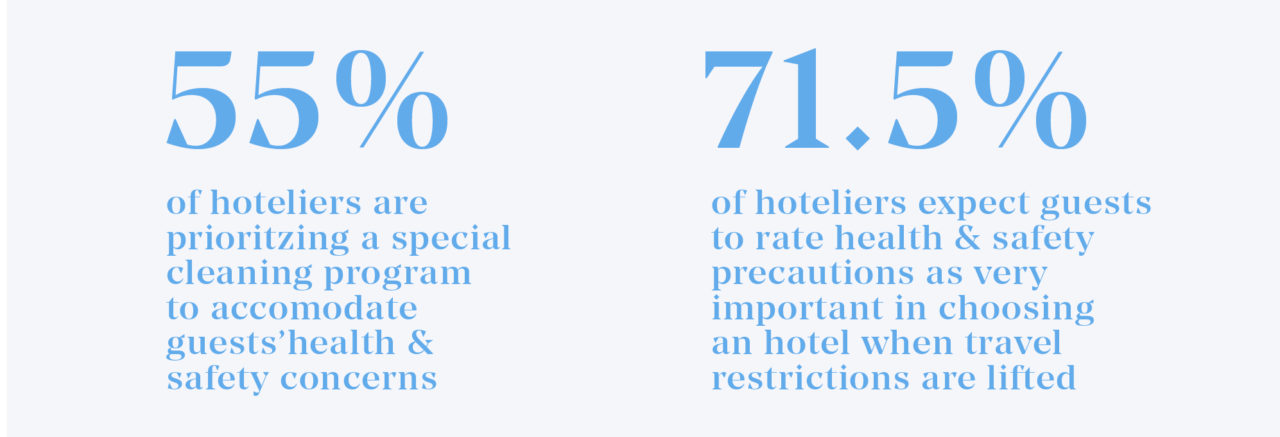
In just a short number of weeks since the beginning of March 2020, the worldwide travel industry rapidly plunged deep into a state of crisis.
NB: This is an article from GuestCentric
Hotels across the globe closed their doors and reached minus 95% of new bookings compared to 2019.
But now that the initial shockwaves of the crisis have passed and we enter the brink of recovery, everyone across the industry is now asking: “What comes next?”
In this article, we share 5 ways hoteliers can make the best possible use of the downturn for a stronger recovery in the post-lockdown world.
The Hotelier’s Action Plan for a Post-Lockdown World
While there is much to be learned from previous economic downturns, it’s fair to say this crisis is unlike any other. It hit the industry hard and fast, and the impact will be felt for years to come. Even still, here are 5 strategies you can follow in your action plan for a post-lockdown world.
1. Don’t Stop Reaching out to Customers
Top-of-mind: Promote your destination. Every destination is now a start-up, giving you the opportunity to reinvent the way you present it by intrinsically linking the destination with your hotel.
Yes, travel has come to a halt for now. But travelers are dreaming of their next escape when restrictions are lifted.
Bottom line: Brand awareness – you must make people continue to dream about your destination. And why not make them look at your property as the destination itself?
Engage them now, so they can experience it soon, by boosting inspiration and dream in every single communication you release, either on your website, on your social networks or through email marketing campaigns.
2. Think Local When it comes to Markets & Distribution
Local and domestic markets are expected to rebound first, so it’s important to stay ahead of the curve. According to a recent survey by Avvio, over 71% of travelers plan to travel domestically in 2020 and will book later in the year when restrictions begin to ease.
In our own research, nearly 60% of Hoteliers expect ‘Domestic Leisure’ travel to be the first segment to contribute to their recovery.

We are on the verge of the staycation era and hoteliers need to adapt to this new demand before it actually starts showing more concrete signs – i.e. bookings.
There are elementary actions you can put in place right away, such as setting up your default language on your website taking that into account or, on the other hand, focusing your efforts on domestic audiences who have historically performed well and that are somehow aligned with this new demand (e.g. nature, tranquility, etc.).
Focus on customer experience and engagement. Investing in local tourism packages with local experiences means working synergies between local businesses and elevate the feeling of lifting up the local economy to a common cause where, more than ever, small and local businesses will be highly valued.
For city center hotels this may be more challenging. However, the ability to reinvent and redefine the unique value proposition is something this segment is renowned for. Even now some properties are promoting offers that we would never expect before the crisis.
For example, social confinement took us to work from home mode, with our children, husband, wife, and pets. Counterproductive working conditions may drive professionals to seek solutions that could guarantee social distance and a safe and clean work environment in a more quiet space.
Daycation stands for offering locals day rates, where you may also work your hotel services – such as spacious working area, in-room coffee break, high-speed wireless, etc.
3. Keep your Website Open for Business
By keeping your website open for business, we don’t mean you should continue pushing sales no matter what. This makes me think of something that our CEO Pedro Colaço often says, and that, in this case, makes perfect sense: “Marketing shouldn’t be about selling, but about generating demand”. So, the focus nowadays needs to shift to the bottom of the funnel – work on intent.
When it comes to areas for marketing investment over the next 12 months, we found that over 27% of Hoteliers are prioritizing their hotel website. It will still be a while before hotels start generating high volumes of guests, so getting a head start on updating your website now is not only a strategic choice but a smart one too.

For example, you could take advantage of the empty property to update your website images and encourage guests to start considering your hotel in their holiday planning.
Be proactive – work on your databases and encourage the gradual comeback everyone wants: short breaks, early birds. Let your guests know how you have adapted to the “new normal”. Reiterate that their safety is your top priority.
4. Cleanliness will be Addressed a lot – Have a Safety Plan in Place
Covid-19 has not only drastically reduced demand and occupancy rates but is now forcing hotels to ramp up their cleaning protocols and hygiene.
According to our own research via our fortnightly Hotelier PULSE report, 55% of respondents are currently prioritizing a special cleaning program to accommodate guests’ health & safety concerns above anything else.
The pandemic gave us a different look at issues related to hygiene and social distance so it should be expected that hotel guests will prioritize destinations with a solid health and safety plan in place. In fact, on a scale of 1 to 7 (with 7 being the ‘Most Important’), 71.5% of hoteliers expect guests to rate health & precautions at 6.6.

This is the time to start thinking about what sort of ways you shall adapt your hotel to this new need, in a committed way. Are you going to quarantine the rooms for 3 days? Are you going to replace the breakfast buffet for breakfast a-la-carte? Do you already have a new strategy for cleaning in housekeeping defined?
Once you have a plan in place, inform your guests about the health measures being taken by the hotel ideally during all stages of the guest journey – dreaming, planning, booking, experiencing. Communicating those things will address safety and responsibility.
But it’s not enough to just tell people you’re cleaning, you have to let them see people cleaning. Your property needs to be transparent about health and safety measures through leading by example, so we have a sense of comfort. Guests will only return to hotels if they feel safe.
For example, the Hilton is working with health experts at Mayo Clinic and the makers of Lysol for its new “CleanStay” program. The new measures mandate extra disinfection of the 10 most often touched parts of a hotel room — light switches, TV remotes, thermostats, toilet handles — and putting a seal on room doors to let guests know they’re the first to enter their freshly cleaned quarters.
It’s worth noting that the dining experience will likely be very different post-COVID. Hotel owners and managers should consider implementing a new floor layout in their restaurants where the tables are more spaced. It’s important to establish proper table management to ensure that there is ample spacing with health and safety in mind.
Is it time to re-think the traditional, extensive buffet set up when you start receiving guests again? Based on the heightened health and safety concerns shared by travelers worldwide, the answer is ‘yes’. For guests who do not want to dine in the hotel, you could also look at preparing a wider range of take-out or room service options.
You may also want to consider quarantining rooms for a period of 2 to 3 days after a guest has checked-out to ensure you allow enough time for sanitization. Communicating this measure on your website and booking engine will also reassure guests that their safety is your top priority.
5. Organic is King – Can We Position for the Future?
If there was ever a time to reclaim control of your brand online, it is now. Have you already noticed the results of Google search lately? Since Booking.com and Expedia stopped their campaigns, organic results place hotels on top.
This is the way it should be always, and it is for Marriot, Hilton, and all the other big hotel brands. With independent hotels doing a reset on their distribution strategy, it’s important to pursue the same brand protection clauses that Hilton and Marriott demand: no advertising on the property name.
This downtime is an opportunity for you to renegotiate your contracts in order to increase your visibility on Google.
If someone searches for your hotel brand on Google is because that traffic is yours. It means that somehow they learned about your brand, and if the user continues being redirected to a platform that is not yours the guest will potentially book on that platform.
On the other hand, if the first link is yours, you will have more traffic on the website, meaning more conversions.
What Next?
With all that said, now is the time to reset the way things were being done in the last couple of years by regenerating the hospitality industry standards to be more fair and close to what will lead people to travel and stay in hotels from now on.
Now is the time to re-build your strategy with a clean slate. We have lockdown reached ground zero, now we must move upward. Review distribution channels, especially online and GDS. Reassess new channels and stimulate the most profitable ones.
Review fine points such as your value proposition, your customer base, your marketing efforts, and, last but not least, how do you want to be distributing your rates in the future.
Make this time as proactive as possible for a brighter future. Now is the time to build and experiment, so review your digital resources and define how you can optimize them. After all, we are all (more than ever) living in a digital-first age.




